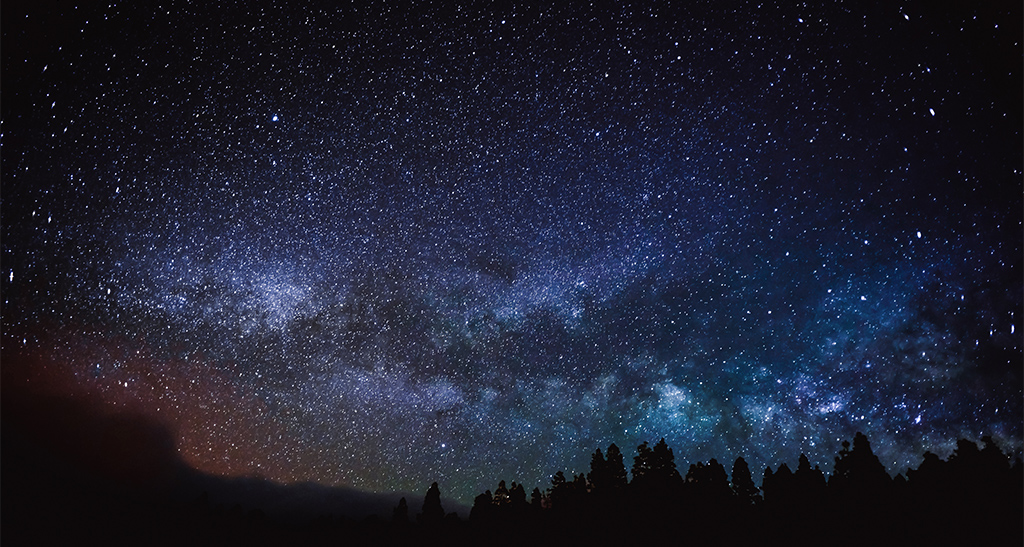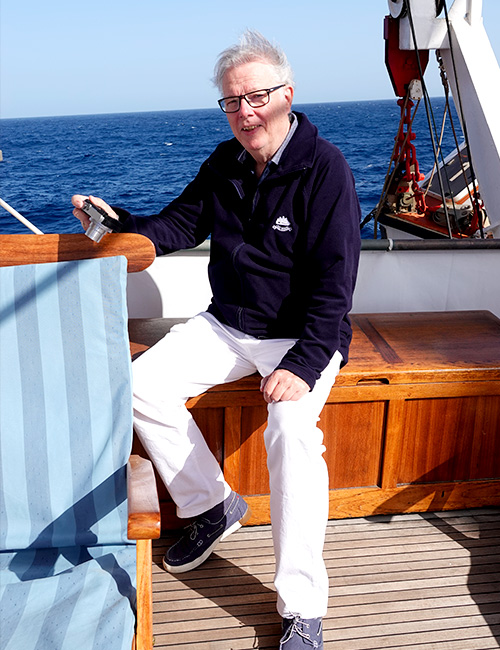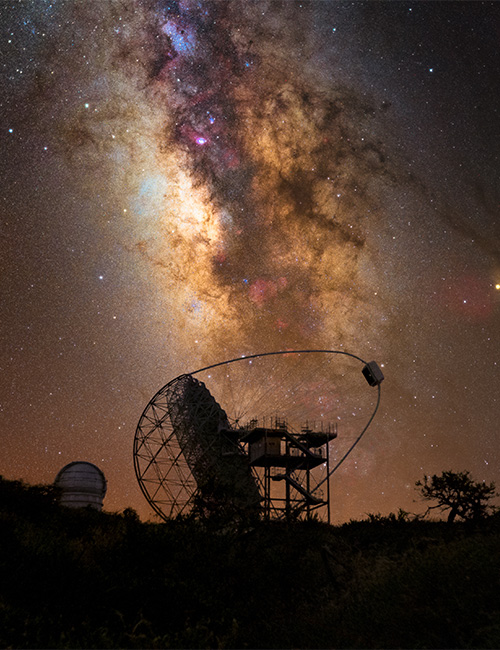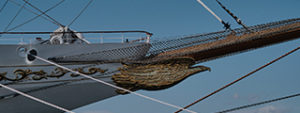AND ABOVE US ONLY SKY
Lying on deck, watching the stars, and enjoying life. Such moments under the night sky on a sailing ship in the Canary Islands are simply unforgettable. Astrophysicist Dr. Dirk Soltau knows why.
The sky over the Canary Islands is incomparably beautiful for us laypeople. As an expert, do you see it in the same way?
Of course, part of the reason we experience the sky the way we do from the deck of a sailing ship is the unique atmosphere of the voyage itself. We are relaxed and experience the uniqueness of such moments more intensely than we would in our normal stressful lives at home. On top of this, the sky above the Canary Islands is often much clearer than elsewhere, hence the islands are popular with all astronomers, even if they have to climb to around 2,500 metres to see the sky properly.
Why is the sky above the Canary Islands so special, and why do astronomers have to climb so high to see it, if we can see it so well from the decks of our ships?
To explain the unique character of the night sky over the Canary Islands, we need to delve into physics for a while. If the night is cloudless, our view of the sky is especially good if we are looking through the calmest atmospheric layer possible. Air over land is heated to varying degrees, and the fluctuating temperatures cause the formation of bands of air that break up light from the stars in different ways, causing the overall picture to flicker and appear less clear. Over an even surface like the ocean, the air is much calmer, so there is less atmospheric interference.
The Canary Islands rise up from the water at such a steep angle from the ocean that there is such little land between the sea and the island peaks so any heated air cannot cause a big disturbance. The only other place where this is the case is Hawaii, which is why both of these chains of islands are such good places for astronomical observatories. The higher up the observatories are, the thinner the air is above them – that is why astronomers can see much more there than from on board a ship.

Even if we can’t see the stars as well as astronomers in their observatories, starlight inspires us more than almost any other sight. Why is this?
I can well believe that this unique relationship we have with the stars in the night sky was formed back in the Stone Age. At that time, people were plunged into a kind of darkness at night that we cannot imagine today. Being able to look out at what seemed to them to be fixed bright lights in the sky, that appeared each night, must have been both a calming and slightly mystical experience. Many constellations were elevated to a god-like status, and for good reason. And we still experience this feeling of looking at something unattainable and yet visible, even though we now have much better explanations for many things.
The stars have always provided a sense of security for seafarers, as they serve as a navigational aid. How important do you think it was for Christopher Columbus to look up to the stars, when he set sail on his voyage of discovery – to what he thought was India?
Even Odysseus used the stars to get his bearings, as we read in Homer’s Odyssey. However, celestial navigation in the 15th century was not at all comparable to modern astronavigation. Columbus could roughly determine the angle between the horizon and the North Star, and use it to calculate the approximate latitude. At that time, one could only estimate longitude – you always had to travel precisely in a straight line while measuring your speed, in order calculate the distance you had travelled. Columbus was convinced that he would arrive in India if he continued sailing west on the 30th parallel. However, apparently his crew did not entirely trust his navigational skills. If you trace the course he and his ships actually sailed, you will see there is a large bulge in the course in the middle of the Atlantic.


„And at night you will look up at the stars … In one of the stars I shall be living. In one of them I shall be laughing. And so it will be as if all the stars were laughing, when you look at the sky at night … You–only you–will have stars that can laugh“.
“The Little Prince” by Antoine de Saint-Exupéry
What was your personal North Star which set you on a course to become an astrophysicist?
When I was five years old, I wanted to be a fire chief. The stars did not play a role in my life then. At age 10, I realized I could be a meteorologist and go on adventurous expeditions. I then became interested in physics and astronomy at school …
…for many people, there is something about both of those particular subjects that they simply cannot grasp…
…that is precisely what makes them both so exciting. As an astrophysicist, I often deal with matters that are outside the realm of human imagination. Just take the concept of space- time, and Einstein’s general theory of relativity. As an ordinary person, there is no way we can understand such things. But, as an astrophysicist, you learn that both are measurable – which makes them quite fascinating, as it turns something unimaginable into a reality. When this is your profession, it is something truly special. I actually came very close to the goal I had at 10 years old; namely to go on adventurous expeditions. Each journey I accompany on one of the SEA CLOUDS as a lecturer is just this kind of adventure. This is travel in its purest form …






